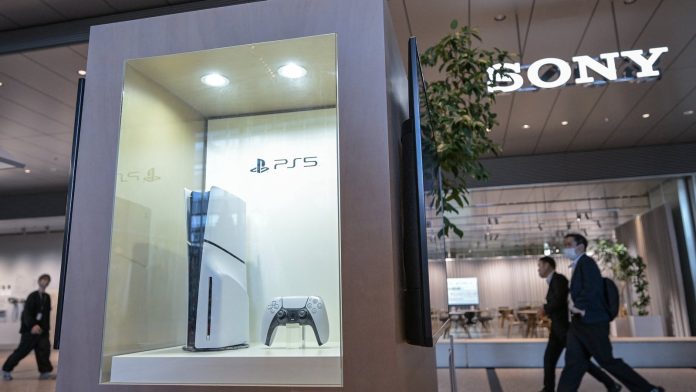
The Rising Cost of PlayStation 5 and the Ripple Effects of Tariffs in the US Economy
Walk into a bustling electronics store in New York, Tokyo, or Berlin, and one sight commands instant attention: the PlayStation 5. Sleek, futuristic, and packed with cutting-edge tech, the PS5 isn’t just another video game console; it has become a cultural icon for gamers worldwide.
But lately, that icon carries a heavier price tag, especially for American consumers. Sony has announced an increase of over €40 in the retail price of the PlayStation 5 in the United States, citing a “challenging economic environment.” This development—seemingly small on its own—holds a window into the complex dance of international trade policies, tariffs, and their subtle but serious impacts on everyday lives.
Behind the Price Tag: Tariffs and Trade Tensions
For many, the allure of the PS5 goes beyond gaming. It’s a portal to immersive worlds, shared adventures, and the beating heart of modern digital entertainment. Yet, their increased price stings, prompting the question: why now?
The answer lies in a web spun by tariffs—taxes levied on imported goods. In recent years, under former President Donald Trump’s administration, the U.S. adopted aggressive tariff policies on imports, aiming to protect domestic manufacturing and assert economic independence. Japan, home to Sony, was caught in this crossfire. The initial threat was a staggering 25% tariff increase on goods crossing into the U.S., but after negotiations, Japan secured a somewhat mitigated 15% tariff.
“It’s a delicate balance,” says Isabelle Tomatis, Sony Interactive Entertainment’s vice president of global marketing. “Like many global companies, we continue to navigate a challenging economic environment shaped by shifting trade policies.” It’s a poignant reminder of how delicate and intertwined global supply chains have become.
The Numbers Tell a Story
Consider this: before the price hike, the PlayStation 5 hovered around €430 for the base model and €590 for the Pro edition. Now, the costs have nudged upward to approximately €472 for the standard console, €430 for the Digital Edition, and a heftier €643 for the Pro version. While these increases might seem small to an outsider, for many customers—especially younger gamers or families budgeting tightly—this subtle rise can be a meaningful barrier.
Sony’s projections underscore the scale of pressure tariffs introduce. The company expects to shoulder around €583 million in added costs over its fiscal year—a staggering figure that explains, if not justifies, the price jump.
Not Just Sony: A Broader Picture of Economic Strain
Sony is far from alone in navigating these turbulent waters. The new tariffs on steel, aluminum, and other metals ripple across multiple industries, forcing brands large and small to re-examine their pricing and sourcing strategies.
Take Estee Lauder, the New York-based cosmetics giant, for instance. The company anticipates an €85 million hit from tariffs in the 2026 financial year alone and has hinted at potential price adjustments to shield its profit margins.
PepsiCo, known worldwide for its fizzy sodas and crunchy snacks, may increase soft drink prices by approximately 10%, a move driven particularly by tariffs on imported aluminum indispensable for soda cans. “We’re working through this complex situation,” a PepsiCo representative says. “The tariffs on raw materials don’t just increase our costs; they ultimately affect our customers.”
Then there’s Monster Beverages in California. CEO Hilton Schlosberg “acknowledges the complexity” of customs regulations and tariffs and sees price hikes as likely, a necessary step amid a “complex and dynamic customs landscape.” It’s not just about steel and aluminum; these tariffs touch on myriad components embedded in everyday goods.
How Tariffs Are Changing Roads Less Traveled
The U.S. Department of Commerce recently expanded its steel and aluminum tariffs, encompassing hundreds more products—from child safety seats to dinnerware and heavy industrial equipment. These measures, aimed primarily at protecting domestic manufacturers, echo deeper trade conflicts playing out on a global scale.
Economists continue to debate the long-term effects. To date, much of the immediate shock has been softened—companies buying goods ahead of tariff increases or absorbing some tariffs internally. But the cumulative strain on supply chains, inflation, and consumer wallets has started to take shape.
Voices from the Ground: What This Means for Consumers
Walk the streets of Chicago, and you’ll hear a spectrum of reactions. Thomas, a 23-year-old game developer, sighs: “I was hoping to get the PS5 for my birthday, but with the new price, it’s a tough call. It feels like things are getting more expensive every month.”
Meanwhile, Maria, a mother of two from San Diego, reflects, “Between groceries, rent, and everything else, even €40 more makes a difference. It’s frustrating because you just want to give your kids a little fun after a tough year.”
These personal stories are snapshots of a broader reality—one where global politics, economic policies, and consumer experiences intertwine in unexpected ways. It beckons us to ask: How do international trade decisions shape not just corporations but households, dreams, and daily choices?
Looking Beyond the Console
The story of the PlayStation 5 price hike is far more than a marketing update or a corporate press release. It is a vivid illustration of how interconnected our world has become. A tariff imposed in Washington reverberates through the factories in Japan, trace its impact on shelves in America, and lands squarely in the pockets of families, gamers, and workers everywhere.
As global citizens, we may sometimes forget how deeply embedded these economic policies are in the fabric of everyday life. Each price increase carries with it questions about the future of globalization, trade wars, and the balance between protecting domestic industries and embracing an open market.
So the next time you pick up a video game controller or pour yourself a soda, pause and ponder: What unseen forces shaped the cost in your hand? How do we build systems that support fair pricing, innovation, and accessibility in a world of shifting alliances and economic setbacks?
Final Thoughts: Navigating an Uncertain Economic Landscape
It’s clear that for companies like Sony and many others, resilience and adaptability have become essential survival skills. Global trade is no longer just about importing and exporting; it’s about managing risks, rethinking supply chains, and grappling with political realities over which businesses have limited control.
For consumers, it’s a moment of reckoning. Will we accept rising prices as the new normal? Or will we demand smarter policies that balance economic interests without weighing heavily on everyday people?
In this saga of tariffs and technology, the price of fun, beauty, and refreshment becomes a reflection of larger economic shifts—a reminder that the headlines we scroll past are, at their core, stories about us all.









